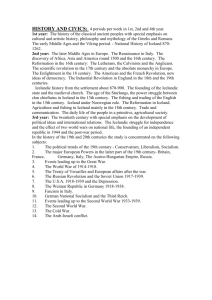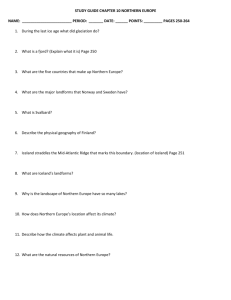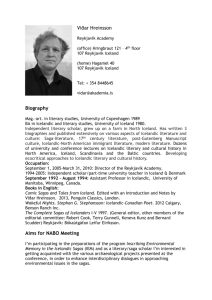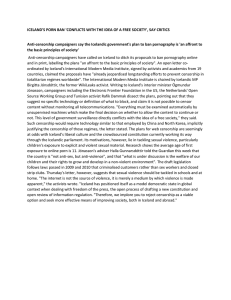Exploration_of_teachers´ped_and_per
advertisement
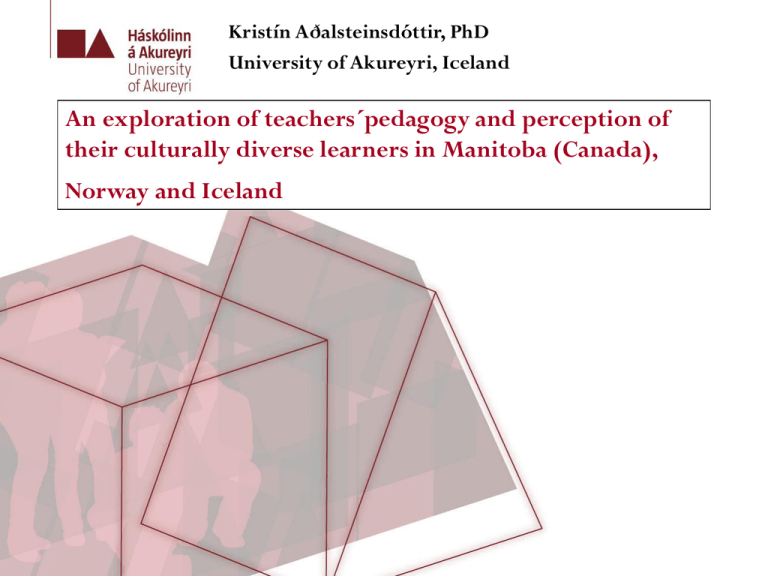
Kristín Aðalsteinsdóttir, PhD University of Akureyri, Iceland An exploration of teachers´pedagogy and perception of their culturally diverse learners in Manitoba (Canada), Norway and Iceland Multicultural teaching (1) a theoretical teaching approach that aims to create an equal learning opportunity for all students; (2) an ideology that aims to actualise democratic ideas, such as equality, justice, and human rights; and (3) a process that has no end, because there will always be inconsistencies between democratic ideals and that which is advanced in schools and in the community (Banks, 2002:123). Aims of multicutural teaching • To encourage all children to be attentive, responsible, active members of the society in which they live (Banks, 2002). • That teachers continually ask themselves if their teacing is multicultural and must stimulate students to develop and grow within themselves, thoughts that make them capable of taking part in a multicultural, democratic society (Davidman and Davidman, 2001). • It includes helping each individual student to develop positive self-respect as well as positive beliefs about solidarity toward others and fair opportunities for all (Tiedt and Tiedt, 2002). The goal of the research • to procure information about: – how prepared teachers are to teach international students; – how teachers meet the individual needs of international students; and – how international students adapt to a new educational community Method I; Structured interviews • • • • • • • • • • Teachers´ education teaching experience preparation for teaching international students cultural variability within the class/school equal opportunity within the class/school particular needs of pupils language abilities relationship between teachers relationship with families homework Method II; Field notes Observations regarding: – Teaching methods and attitudes/ – events in the classroom – pupils´activities regarding international pupils in class Of the results • None of the 18 teachers in the three countries had in common that they had not received training in multicultural teaching as part of their teacher education • considerable differences in the views, planning, and abilities of the teachers in the three countries regarding teaching international pupils Abilities • The Canadian teachers appeared to be the best prepared, to have more mature views, and to demonstrate greater responsibility in their teaching, compared to the Norwegian and Icelandic teachers The learning provisions for international students In Manitoba (Canada): general teaching in the classroom, co-operation, diverse teaching tasks. In Norway: special education was emphasized, both in and out of the classroom. In Iceland: the teachers appeared to avoid responsibility and push students’ difficulties away or to simply not know what provisions were available. Both in Iceland and in Norway: lower standards seem to be applied to international students at the beginning of their schooling than in the Canadian schools. Attitudes • The Canadian teachers indicated unmistakable signs of a sense of responsibility • The Norwegian teachers indicated that they deny responsibility for international children. • The Icelandic teachers an apparent lack of understanding toward diverse cultures; seemed not to connect the circumstances of the children with the learning Adaptation to a new society • In Manitoba (Canada): a rich tradition of immigrants who are proud of their culture and customs, in part because students’ cultures are emphasized in school • The Norwegian and Icelandic teachers, conversely, appeared to deny responsibility toward the international students, and there were even instances of prejudice. They talked about “these people” and “different people” and about differences between Norwegians or Icelanders and immigrants • The Norwegian and Icelandic teachers did not consider it their role to assist students in adapting to a new society, and they appeared not to know how they adapt to the societies Equal opportunity • In Manitoba (Canada) the key towards equal opportunities was to strengthen the selfimage of international children, e.g by using special programs • In Norway there were contradiction in the answers • In Iceland the teachers appeared not to be sufficiently aware of the status of international students Language • In all the countries, international students have poor language comprehension, poor understanding of written and spoken language and poor vocabulary (breadth and depth) expecially the first years after they come to the country. Conclusion • The Canadian teachers appeared to be the best prepared, to have more mature views, and to demonstrate greater responsibility in their teaching, compared to the Norwegian and Icelandic teachers • the Canadian teachers live in a wellestablished multicultural society, where the rights and needs of immigrants were put into law sooner than they were in Norway and in Iceland Conclusion • The results of this research show that the majority of Icelandic and Norwegian participants have not acquired the necessary understanding for multicultural teaching and are not sufficiently prepared to meet the requisites of culturally diverse learners. • One can conclude that this situation makes it more problematic the necessary, for international students to adapt to a new society. • This situation falls short of the demands that are made by the government of both Norway and Iceland (Reports of the Storting, 2002; Compulsory School Act, 1995).

